Sokcho Oeongchi Badahyanggiro Trail (속초 외옹치 바다향기로)
19.1Km 2023-02-03
585-5, Daepo-dong, Sokcho-si, Gangwon-do
Badahyanggiro is a unique, 1.74-kilometer-long coastal trail that runs from Sokcho Beach to Oeongchi Port. It is mainly divided into the Sokcho Beach section (850 meters) and the Oeongchi section (890 meters), with each having its own vibes. If you are looking to take a light walk along the beach, the Sokcho Beach section is a perfect choice and, if you wish to enjoy views of the dynamic landscape, the Oeongchi section is recommended. The Oeongchi section was restricted to civilian access for several decades so it holds fabulous scenery that has not been damaged by people for a long period of time. It is also famous as a filming spot for K-dramas
Sokcho Beach (속초해수욕장)
19.2Km 2024-11-28
190 Haeoreum-ro, Sokcho-si, Gangwon-do
Sokcho Beach opened in 1976 and is one of Korea's representative beaches. It is close to Sokcho's downtown, and the express bus terminal is also within walking distance, so transportation is convenient. With clear sea water, shallow depth, and a gentle slope, Sokcho Beach attracts visitors from all over the country every summer. Especially during the high season in July and August, the beach is so cluttered that there's nowhere to walk. There are many restaurants and facilities near the beach. And there is a pine forest with a small park and a trail behind the beach. The sculptures installed throughout the sandy beach are a sight to see regardless of the season, so tourists continue to visit even after the holiday season. There are sculptures including the Korean initials "ㅅㅊ" symbolizing Sokcho, a large compass showing directions to countries around the world, and a dolphin sculpture. The large picture frame with the blue sea in the background and the Stairway to Heaven are the most popular photo spots here. The beach often serves as a venue for a variety of events like performances and festivals.
Sokcho Eye (속초해수욕장 대관람차(속초아이))
19.2Km 2025-02-04
2 Cheonghohaean-gil, Sokcho-si, Gangwon-do
Located at Sokcho Beach, Sokcho Eye is a towering Ferris wheel standing approximately 65 meters tall, offering panoramic views of the blue sea, Seoraksan Mountain, and the city of Sokcho. Featuring 36 cabins, its charming, submarine-inspired circular design is truly eye-catching. Constructed entirely with transparent acrylic walls, it provides an unobstructed 360-degree view, ensuring a memorable experience from every angle.
Ziozia - Sokcho Branch [Tax Refund Shop] (지오지아 속초점)
19.3Km 2024-04-19
117-1, Jungang-ro, Sokcho-si, Gangwon-do
-
MLB - Sokcho Branch [Tax Refund Shop] (엠엘비 속초점)
19.3Km 2024-06-28
119-1, Jungang-ro, Sokcho-si, Gangwon-do
-
Café ONE FINE DAY (어느멋진날카페)
19.3Km 2024-02-16
54 Cheongho-ro 2-gil, Sokcho-si, Gangwon-do
Café ONE FINE DAY boasts a stunning view of Sokcho Beach, visible right before it. Both the first and second floors feature expansive window walls that offer unobstructed views of the beach, while the third floor provides a view of the Sokcho Eye. The café's signature menu includes the "Sokcho Eye corn latte," named after the Ferris wheel visible from the café, and the "Ferris wheel bread." Other popular offerings include fresh pineapple juice and the unique Cotton candy latte.
Yongdae National Recreational Forest (국립 용대자연휴양림)
19.4Km 2020-03-27
7, Yeonhwadong-gil, Inje-gun, Gangwon-do
+82-33-462-5031
Yongdae National Recreational Forest features rivers that flow from Maebongsan Mountain (alt. 1,271 m) and Cheoljeongbong Mountain (alt. 1,172 m). The forest consists of deciduous trees such as oak, linden, and birch, as well as pine trees. Not only does the forest boast a beautiful landscape all-year-round, but also serves as a habitat for wild animals of various species, including rabbits, deer, squirrels, raccoons, and even lenoks, which are designated as endangered species.
ARUNA (아루나)
19.4Km 2024-02-16
85 Cheonghohaean-gil, Sokcho-si, Gangwon-do
Located on Sokcho’s Cheonghohaean-gil, ARUNA is renowned for its stunning ocean views and rooftop area. The first floor of the café features a large window wall on one side, offering expansive views of the sky and the East Sea. ARUNA’s selection of coffee beverages and desserts, including matcha, scones, and cookies, are well-received by visitors. Additionally, the café is conveniently located near several tourist attractions such as Sokchohaebyeon Beach, Sokcho Eye (Ferris Wheel), and Abai Village.
Sokcho Tourist & Fishery Market (Formerly, Jungang Market) (속초 관광수산시장 (구: 중앙시장))
19.5Km 2024-12-03
12 Jungang-ro 147beon-gil, Sokcho-si, Gangwon-do
+82-33-653-8433
The Sokcho Tourist Fish Market, an essential tourist attraction in Sokcho, offers all sorts of things. The market includes a large building with a basement and two floors above ground and specialized alley stores. The building consists of shops for clothes, daily necessities, and other general products; the Nonghyup Hanaro Mart; and the Raw Fish Center, which sells fresh live fish and seafood at a reasonable price. The alley market is divided into several alleyways specialized in each product such as a vegetable & fruit alley, a chili pepper alley, a blood sausage alley, a salted seafood market alley, a chicken alley, and so on. Especially, fresh agricultural and fish products, and dried seafood products will draw visitors’ attention. The chicken alley is popular among tourists with various crunchy and spicy dak gangjeong (glazed fried chicken bites) stores, which offer their own taste. The alley market has a rain protection facility and a clean and pleasant environment, and a wide parking lot for visitors’ convenience.
Abai Village (아바이 마을)
19.5Km 2025-03-16
122-1 Cheongho-ro, Sokcho-si, Gangwon-do
Located in Cheongho-dong, Abai Village bears a history of displaced people’s distress. The village was formed by refugees of the Korean War from North Korea, mainly from Hamgyeong-do Province. The word “abai” is a dialect of Hamgyeong-do that means a friendly old man like a grandfather. Visitors to Abai Village can get a sense of displaced people’s life and story, which fade away into a chapter of history. Although it has lost its original appearance now, old shacks without a gate still remain here and there. Mural paintings on the wall show the sentiment of nostalgia about their hometown and express sorrow and hard life of displaced people, who lived from hand to mouth by fishing and doing physical labor. The original houses built by refugees in the village were restored into the Refugee Village at the Sokcho Museum. Abai Village is also known as a filming location for the Korean TV drama Autumn in My Heart, attracting a lot of visitors and becoming a major attraction in Sokcho. The restaurant alley is packed with cafes and North Korean food restaurants serving local dishes such as Hamheung-style cold buckwheat noodles, stuffed squid, and North Korean-style sausage soup.

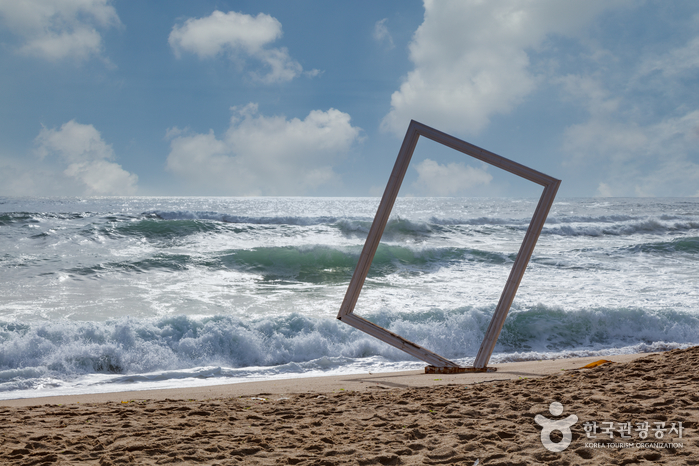
![Ziozia - Sokcho Branch [Tax Refund Shop] (지오지아 속초점)](http://tong.visitkorea.or.kr/cms/resource/48/2890648_image2_1.jpg)
![MLB - Sokcho Branch [Tax Refund Shop] (엠엘비 속초점)](http://tong.visitkorea.or.kr/cms/resource/92/3312792_image2_1.jpg)
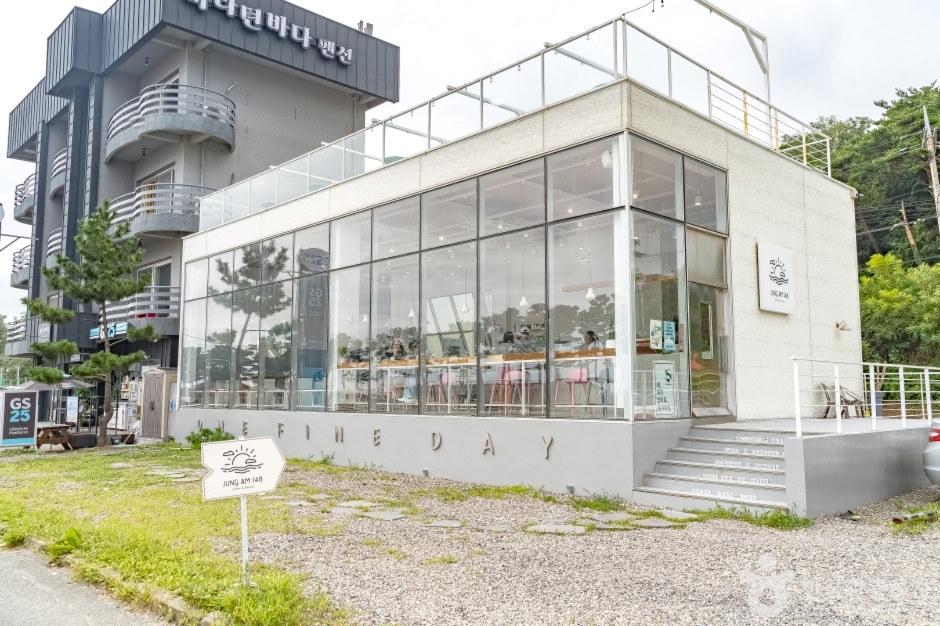
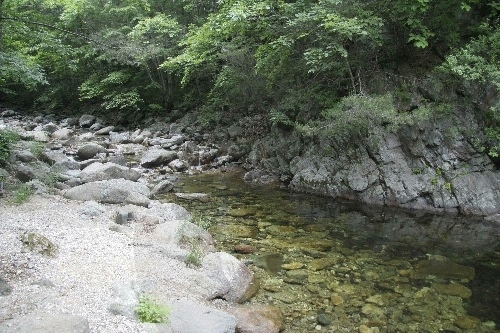
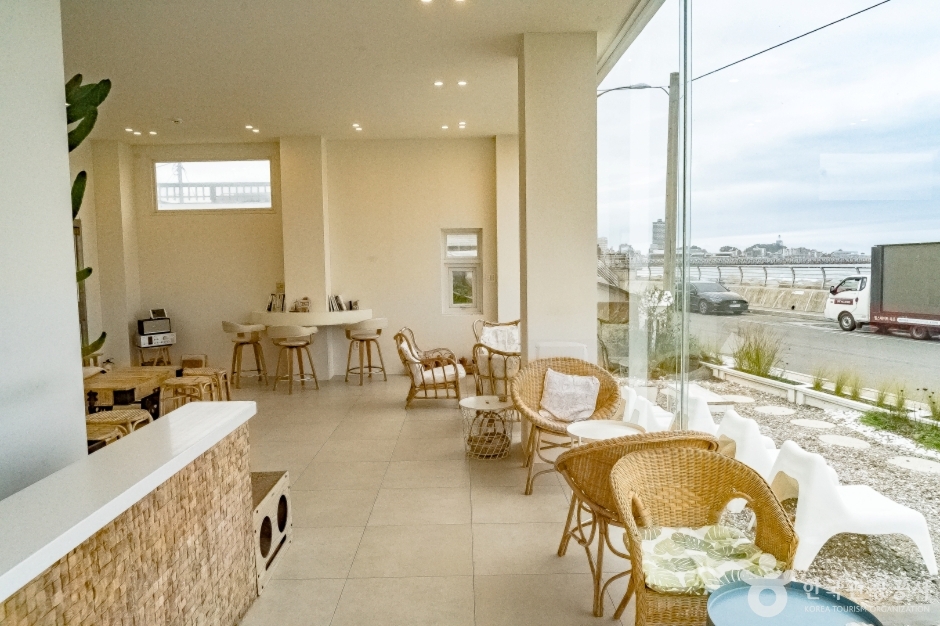
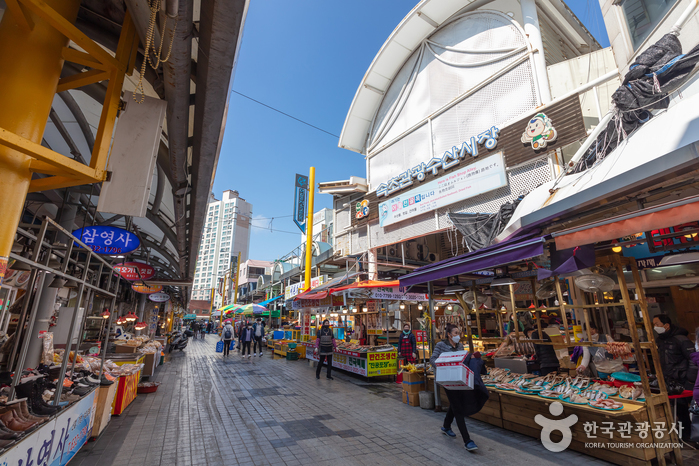
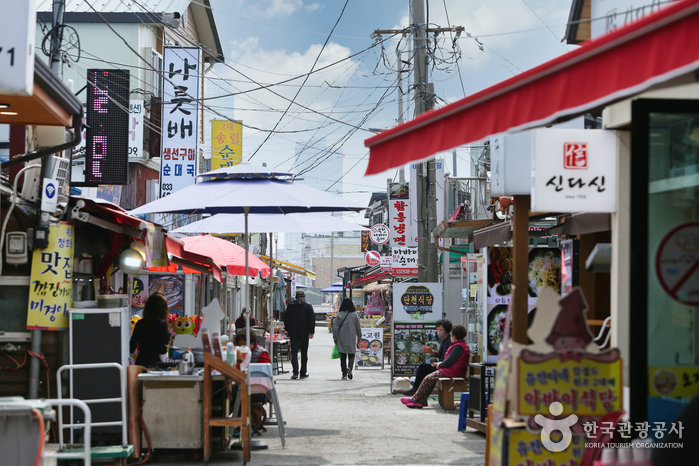
 English
English
 한국어
한국어 日本語
日本語 中文(简体)
中文(简体) Deutsch
Deutsch Français
Français Español
Español Русский
Русский